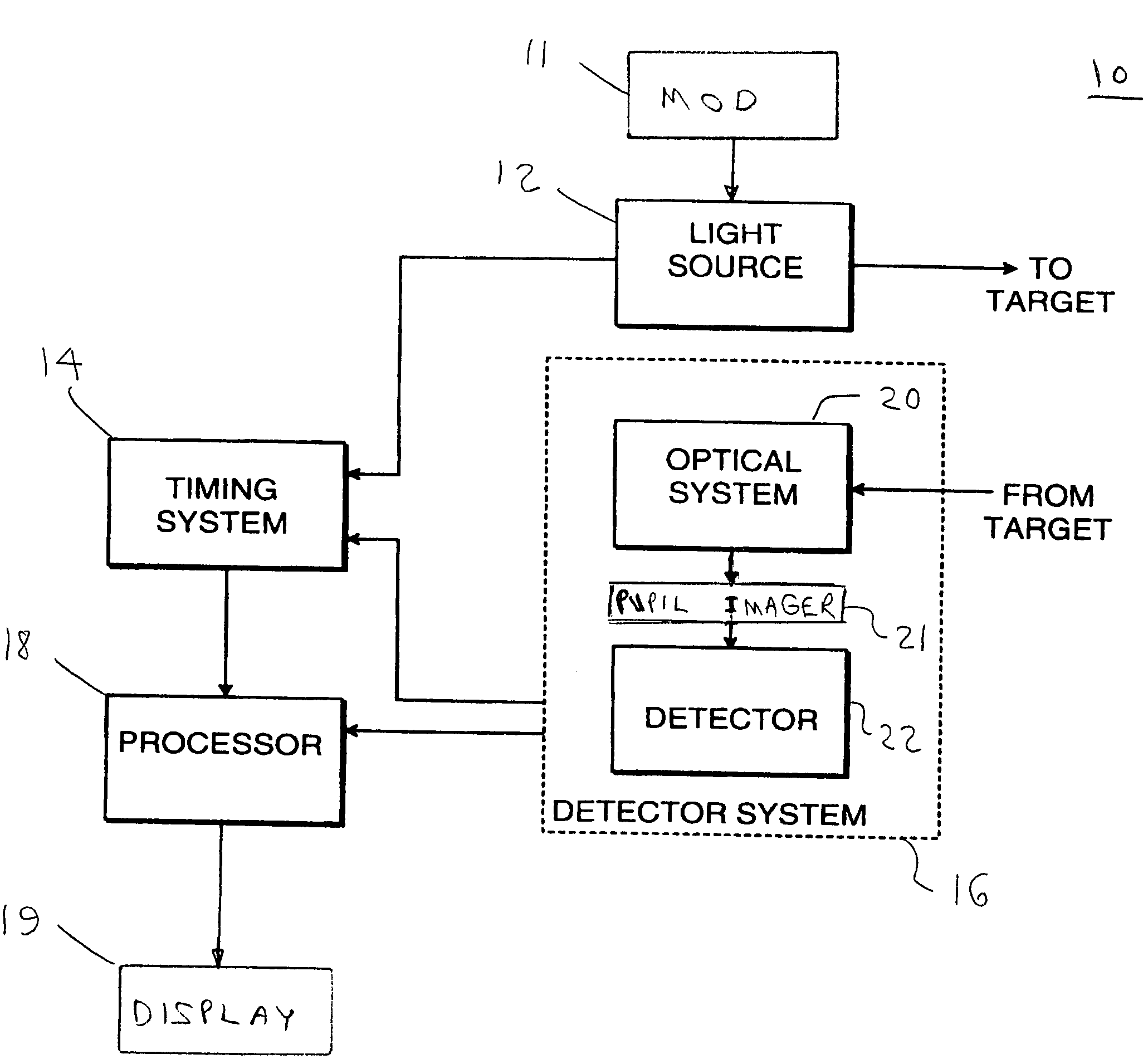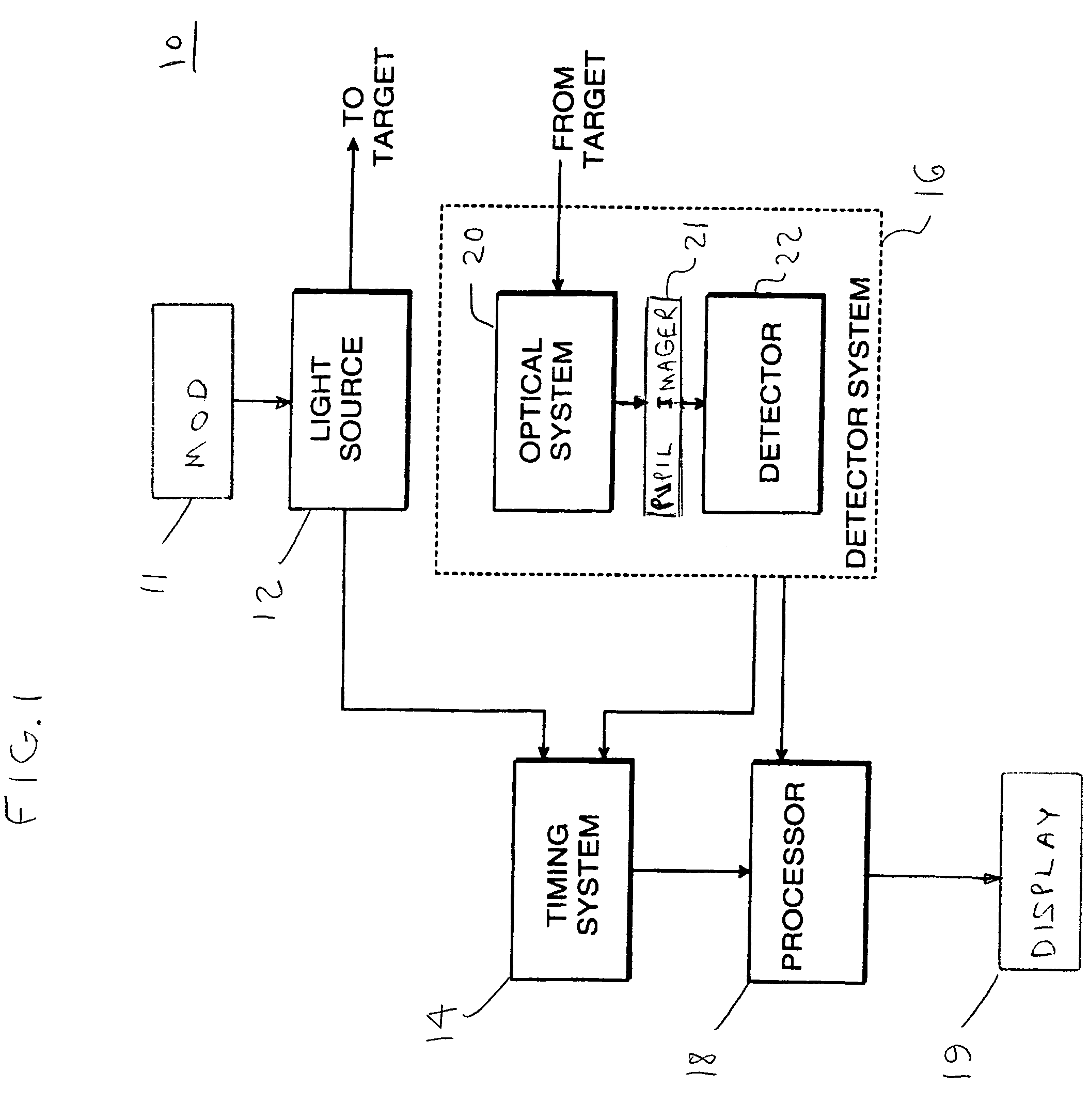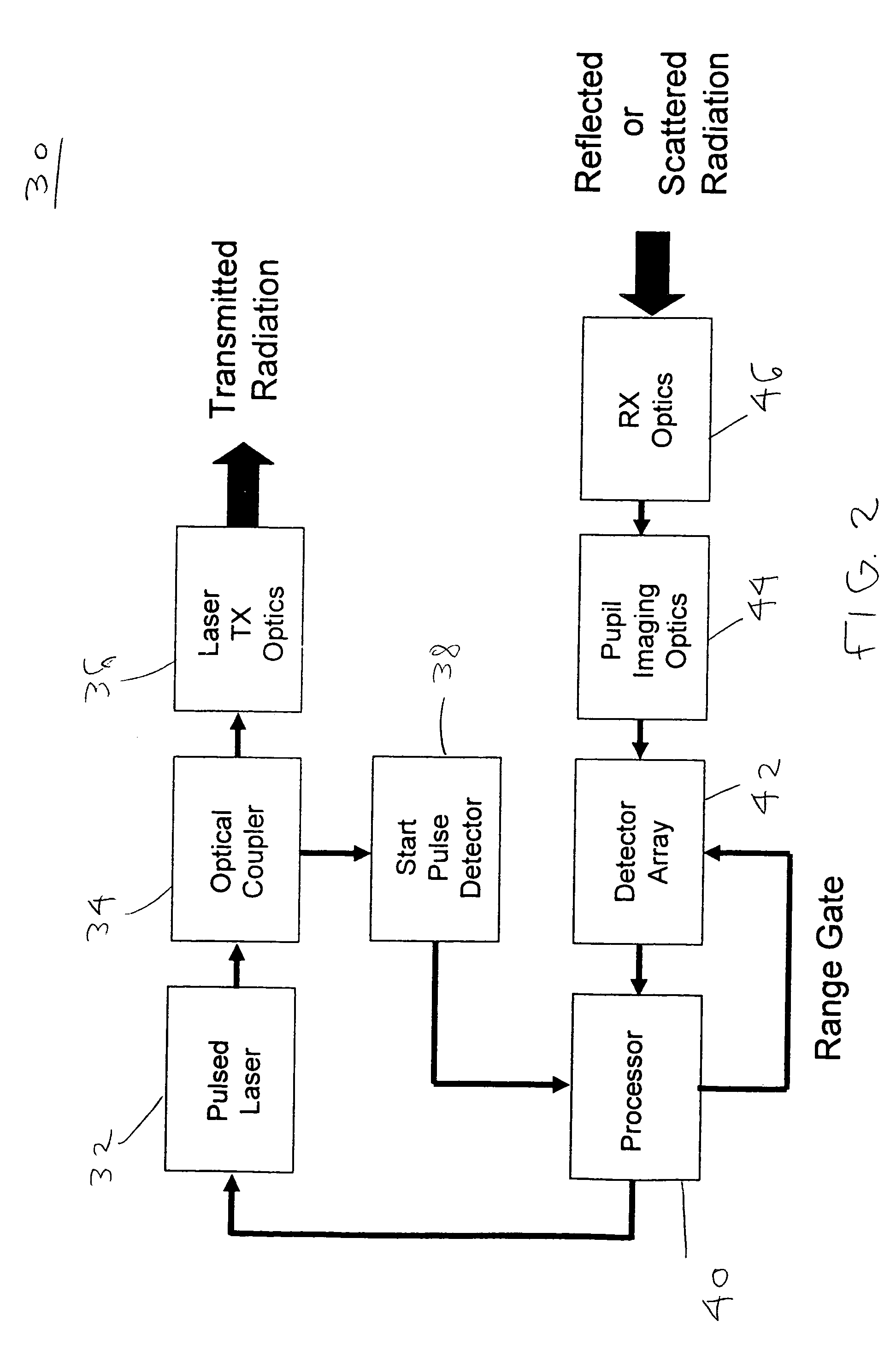Photon-counting, non-imaging, direct-detect LADAR
a laser detection and ladar technology, applied in distance measurement, surveying and navigation, instruments, etc., can solve the problems of increasing the cost of the system, and increasing the risk of apd nois
- Summary
- Abstract
- Description
- Claims
- Application Information
AI Technical Summary
Benefits of technology
Problems solved by technology
Method used
Image
Examples
Embodiment Construction
[0025]Referring to FIG. 1, an embodiment of laser rangefinder 10, according to the present invention, includes modulator 11, light source 12, timing system 14, processor 18, display 19, and detector system 16. Rangefinder system 10 may be used to image a single object or a plurality of objects located in a target scene. As shown, light source 12 is modulated by modulator 11 to produce pulses of light which are emitted toward the target being imaged. Light source 12 may include a laser. The laser may be a solid state microchip laser which emits pulses of light having a wavelength, for example, approximately equal to 532 nanometers (nm). When modulated, the laser may emit short pulses of light having a duration, for example, approximately equal to 220 picoseconds.
[0026]The laser may, of course, be any other laser known in the art for use in laser radar systems. The choice of the laser depends on the particular application. For example, in non-visible applications, such as ultra-violet...
PUM
 Login to View More
Login to View More Abstract
Description
Claims
Application Information
 Login to View More
Login to View More - R&D
- Intellectual Property
- Life Sciences
- Materials
- Tech Scout
- Unparalleled Data Quality
- Higher Quality Content
- 60% Fewer Hallucinations
Browse by: Latest US Patents, China's latest patents, Technical Efficacy Thesaurus, Application Domain, Technology Topic, Popular Technical Reports.
© 2025 PatSnap. All rights reserved.Legal|Privacy policy|Modern Slavery Act Transparency Statement|Sitemap|About US| Contact US: help@patsnap.com



